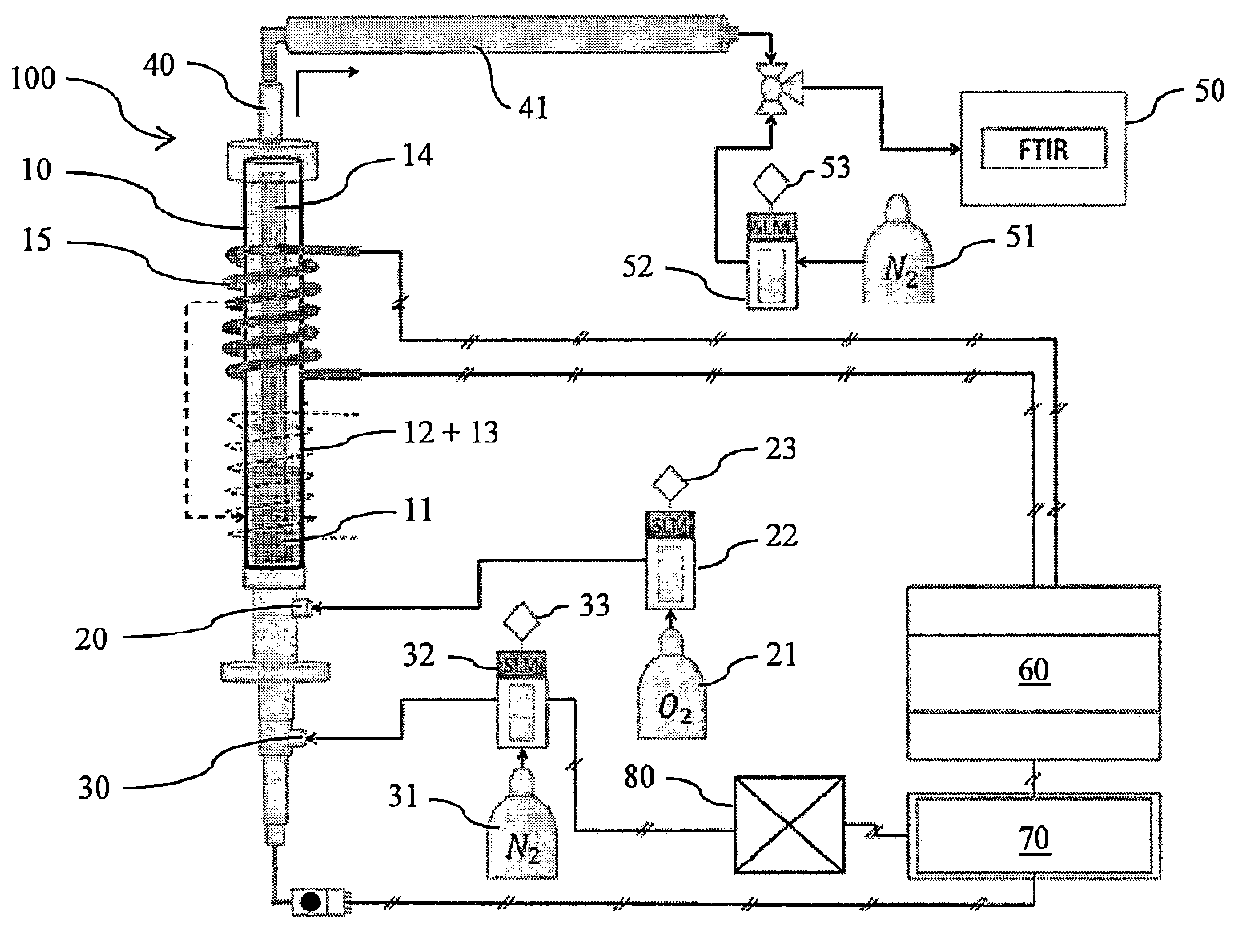Phosphogypsum decomposition process
A phosphogypsum, calcium sulfate technology, applied in chemical instruments and methods, inorganic chemistry, calcium/strontium/barium oxide/hydroxide, etc., can solve problems such as economic infeasibility
- Summary
- Abstract
- Description
- Claims
- Application Information
AI Technical Summary
Problems solved by technology
Method used
Image
Examples
Embodiment 1
[0071] Example 1 - Decomposition of PG into SO 2 and CaO for optimal carbon and O 2
[0072] Carbon oxidation provides the CO required to react with PG at 1100 °C according to the following reaction:
[0073] CaSO 4 +CO→CaO+SO 2 +CO 2 T=1100°C (3)
[0074] However, the following undesired reactions also occur at 1100 °C, which indicates an optimal demand for CO concentration:
[0075] CaSO 4 +4CO→CaS+CO 2 T=1100°C (4)
[0076] Decomposing phosphogypsum under CO has the significant benefit of reducing the operating temperature from 1560°C to 1100°C, thereby reducing the energy expended to maintain the reactor at this temperature.
[0077] However, maintaining the reactor at 1100°C also requires a large amount of energy, making the method economically impractical.
[0078] Typically, CO can be produced from different sources such as steam reforming (natural gas) or coal / biomass oxidation. In the case of coal / biomass oxidation, by adding O 2 CO, CO 2 and H 2 O,...
PUM
| Property | Measurement | Unit |
|---|---|---|
| diameter | aaaaa | aaaaa |
Abstract
Description
Claims
Application Information
 Login to View More
Login to View More - R&D
- Intellectual Property
- Life Sciences
- Materials
- Tech Scout
- Unparalleled Data Quality
- Higher Quality Content
- 60% Fewer Hallucinations
Browse by: Latest US Patents, China's latest patents, Technical Efficacy Thesaurus, Application Domain, Technology Topic, Popular Technical Reports.
© 2025 PatSnap. All rights reserved.Legal|Privacy policy|Modern Slavery Act Transparency Statement|Sitemap|About US| Contact US: help@patsnap.com



